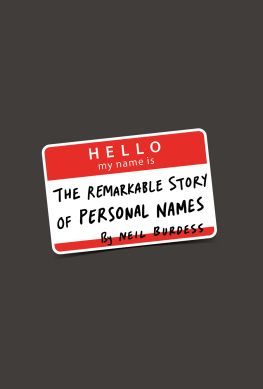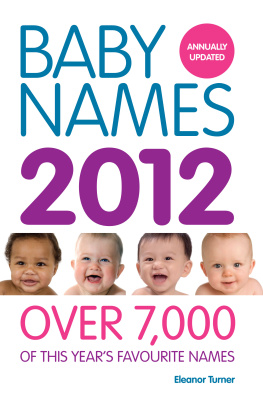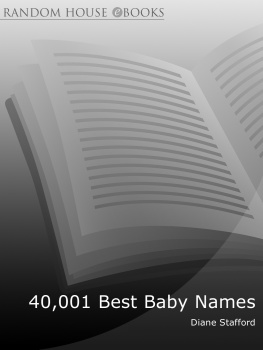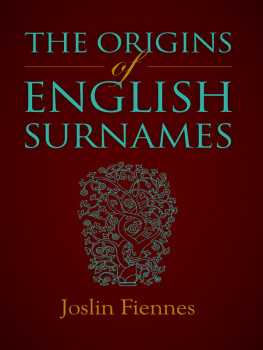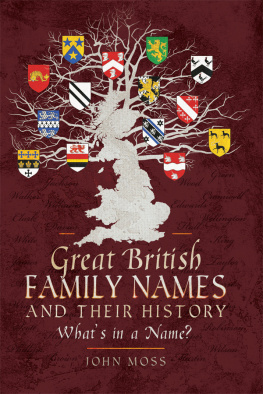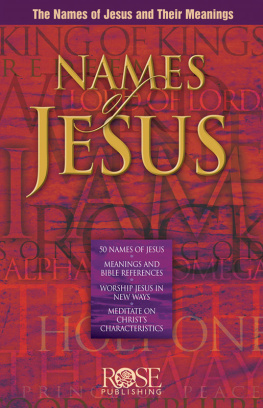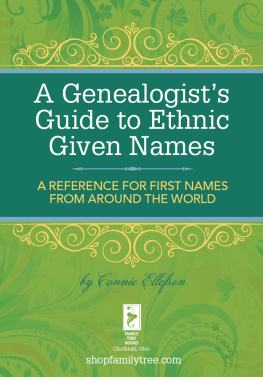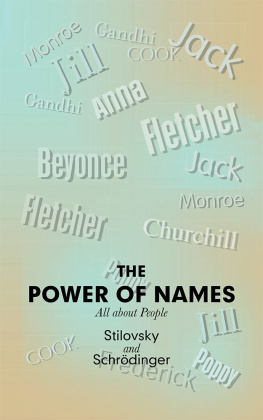Scotland.
All rights reserved. No part of this publication may be reproduced, stored or transmitted in any form without the express written permission of the publisher.
The moral right of Neil Burdess to be recognised as the author of this work has been asserted in accordance with the Copyright, Design and Patent Act, 1988.
The publisher acknowledges support from Creative Scotland towards publication of this volume.
Typeset by Iolaire Typesetting, Newtonmore.
I acknowledge the generous support of Deakin University.
So, youre thinking, whats Hello , My Name Is: The Story of Personal Names about? First, let me explain what its not about. Im sure youve seen some of those baby name books that are designed to help parents-to-be to choose a name. There are not quite as many baby name books as there are baby namesbut there are hundreds of them (books that is). Some now specialise: astrological names, science fiction names, names with only a certain number of letters, and you can even buy books that list names by last letter rather than first. So, if youre about to become a parent and are name shopping, then you have a wide choice of books.
However, Hello, My Name Is: The Story of Personal Names isnt yet another baby name book. Instead, it looks more generally at the fascinating subject of personal names. Of course, everyone is particularly interested in his or her own name. Dale Carnegie, author of one of the most popular and influential books ever written, How to Win Friends and Influence People , points out that a persons name is to that person the sweetest and most important sound. However, interest in personal names does not end there. Your name is just one in a whole ocean of names, many of which have a fascinating story to tell. For example, you may have kept up with the Kardashian sistersKourtney, Kimberly and Khlo (not forgetting half-sisters Kendall and Kylie). Their mother, Kris, chose names starting with the letter K to help unite the family, but she wasnt the first parent to think along these lines. In fact, 1500 years ago Anglo Saxon rulers in England used exactly the same naming technique to cement ties within the family at a time when surnames werent used. For example, King Merewalh of Mercia had six children, whose names all started with the letter M . Amazingly, all three daughters became saintsa feat the Kardashian sisters are unlikely to equal.
There are five main parts to the book. Part 1 is The Story of Personal Names. Its the broadest, setting the scene for the more detailed stuff to follow. For example, why are names important? Would Barack Obama be exactly the same person if his name was Barry Dunham, as he might have been had circumstances been just a little different? Your name is part of your identity, and so if your name changes, do you change as well? There are plenty of people who use a name change as part of a makeover, with the new name being symbolic of becoming a new person. The other chapter in this part of the book asks whether the way we go about naming children in English-speaking countries is the natural way. The answer is definitely not. There are wide variations between societies about when a child is given a name, who has the right to name a child, how the name is chosen, and what name is given.
Part 2 is The Story of Given Names. Some governments require parents to choose from a list of approved names. But in English-speaking countries, parents can give pretty much any name to their child. As a result, there are tens of thousands of given namesone book lists an incredible 140,000 , from Aabha to Zywona for girls, and from Aaban to Zy-Yon for boys. Ive managed to group these given names into just a handful of categories, starting with traditional names that go back many centuries, and ending with new names from new words. This section also looks at the influences on name givers as they choose a particular name from the many thousands available. Some are obvious. For example, the sex of the baby will be the first thing that many parents take into account. However, this wasnt always the case. Only a few hundred years ago many names were used for both boys and girls. For example, in the sixteenth century it wasnt unusual for both bride and groom to be called Richard or Philipand they definitely werent gay marriages. Other influences on name giving are less obvious, such as how names trickle down from the rich to the poor, and how there are fashions in names, just as there are fashions in clothes.
Part 3 is The Story of Family Names. Family names, or surnames, are handed down from one generation to the next, and in Britain they go back nearly one thousand years. Before surnames there were by-names, which were not inherited. For example, Tom the blacksmith might be called Tom Smith; but if Toms son, Dick, was a miller, then he might be Dick Miller. Over the centuries, surnames have risen and fallen. Smith is the undisputed top surname in both the US and Britainthough it doesnt even make the Top Ten in Wales where, of course, Jones is the unchallenged number 1. Some surnames are becoming less common, most obviously ones often seen as embarrassing, such as Smellie, Daft, Balls and Bottom, names which in the past had different, unexceptional meanings. More generally, migrants from non-English-speaking countries traditionally changed their surnames in the hope that it would help them fit more easily into their new country. The most dramatic example is the complete disappearance from US telephone directories of the surname Hitler in the run-up to World War Two. Ironically, the American Hitlers were mainly Jewish migrants who had fled earlier persecution in Europe. This part of the book also looks at the custom of a wife changing her surname to that of her husband. Back in the mid-nineteenth century, when the ownership of slaves was still legal in the US, members of a womens rights group agreed that the slavery and degradation of women proceeds from the institution of marriage. It was no coincidence, they said, that both slaves and wives lost their original names. Slavery is long gone, but most women still change their name when they marry.
Part 4 is The Story of Name Titles. Here, the focus is on the titles we so often attach to personal names. Most widely used, of course, are the social titles Mr, Mrs, Miss and Ms. Originally, Mrs was used to denote high social status rather than marital status or age. This is why one of the daughters of seventeenth century English poet John Milton is described on her tombstone as Mrs Kathern Miltonand she was less than six months old when she died. More recently, the title Ms as a replacement for Miss and Mrs generated a lot of heated discussion. Sometimes the heat drove out common-sense, such as the argument put forward by one New York academic that the Miss and Mrs titles have evolutionary value, and that the very future of the species might be threatened if a man cant tell by her title if a woman is unmarried, and so eligible for his overtures.
Part 5 is The Story of Professional Names. In some jobs, it has long been standard practice to adopt a different name to suit the new professional role. An excellent example is the role of head of the Roman Catholic Church, with popes taking on a new papal name after their election. So, when Jorge Mario Bergoglio was elected in 2013, he became Pope Francis. This part of the book focuses on two professions, authors and actors, looking at their pen names and stage names. The use of stage names was once a common practice, though is now fairly unusual. For example, in the middle of the twentieth century, Norma Jeane Dougherty agreed, rather reluctantly, to become Marilyn MonroeI dont even know how to spell Marilyn! was her first reaction. However, by the end of the twentieth century there was no similar pressure placed on Charlize Theron to replace her South African birth name with a stage name.

